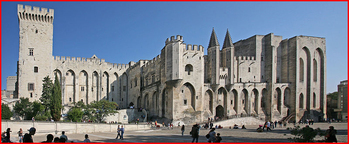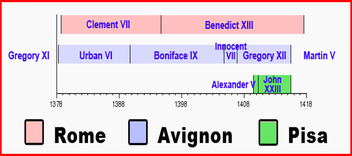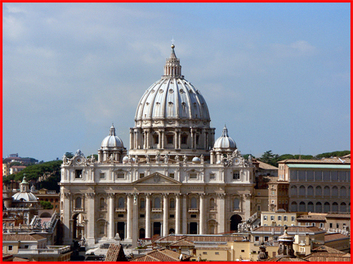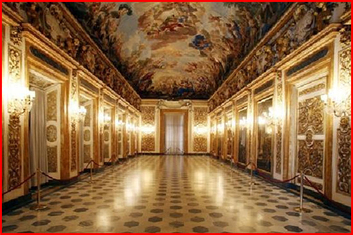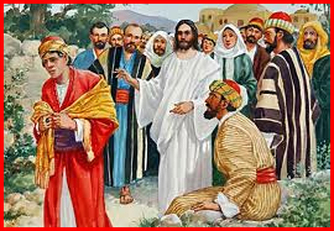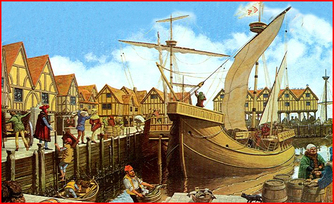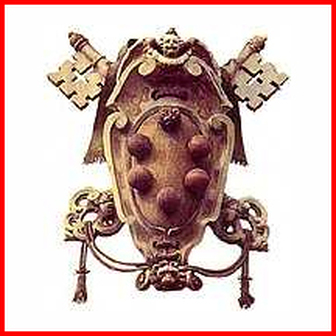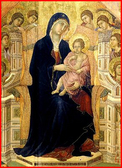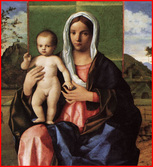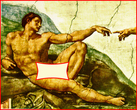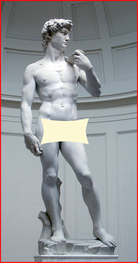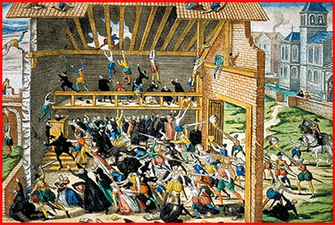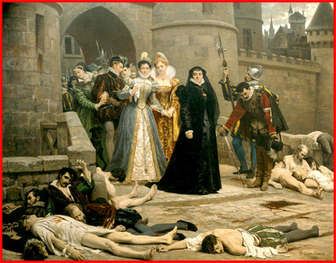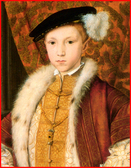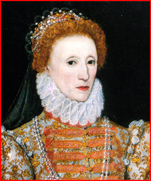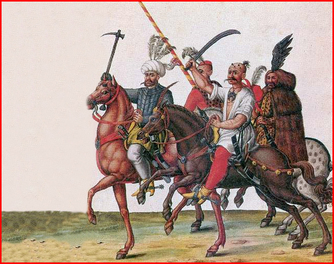| Devotion to Our Lady |
|
- Homepage
-
Daily Thoughts
- 2023 October Daily Thoughts
- Daily Thoughts Lent 2020
- Daily Thoughts for Advent 2019
- Daily Thoughts for October 2019
- Daily Thoughts for September 2019
- Daily Thoughts for August 2019
- Daily Thoughts for July
- Daily Thoughts for June
- Daily Thoughts for Easter 2019
- Daily Thoughts for Lent 2019
- Daily Thoughts for Christmas
- Daily Thoughts Easter 2022
- Sacred Heart
- Holy Ghost
-
Spiritual Life
- Holy Mass Explained
- First Friday Devotions
- First Saturday Devotions
- The Mercy of God
- Vocations
- The Path Everyone Must Walk >
- Gift of Failure
- Halloween or Hell-O-Ween?
- Ignatian Spiritual Exercises >
- Meditation is Soul-Saving
- Spiritual Communion
- Miraculous Medal
- Enrollment in Miraculous Medal
- St. Benedict Medal
- Holy Water
- Advice on Prayer
- Your Daily Mary
-
Prayers
- September Devotions
- Seven Sorrows of Our Lady
-
Novenas
>
- NV-Help of Christians
- NV-Nativity of Our Lady
- NV-Seven Sorrows
- NV- Sorrowful Heart
- NV-Pope St Pius X
- NV-La Salette
- NV-St Michael Archangel
- NV-Immaculate Heart
- NV-Assumption
- NV-Novena for Fathers
- NV-Novena for Your Mother
- NV-St Raphael Archangel
- NV-Souls in Purgatory
- NV-All Saints Day
- NV-Christ the King
- NV-Divine Motherhood
- NV-Guardian Angels
- NV-Rosary
- NV-Mirac Med
- NV- Imm Conc
- NV - Guadalupe
- NV - Nativity of Jesus
- NV-Epiphany
- NV-OL Good Success
- NV-Lourdes
- NV-St Patrick
- NV-St Joseph
- NV-Annunciation
- NV-St Louis de Montfort
- NV-OL Good Counsel
- NV-Last Supper
- NV-Passion
- NV-Pentecost
- NV-Ascension
- NV-Sacred Heart
- NV-Sacred Heart & Perpetual Help
- NV-Corpus Christi
- NV-OL of Perpetual Help
- NV-Queenship BVM
- NV-OL of Mount Carmel
- NV-St Mary Magdalen
- NV- Im Hrt
- August Devotions to IHM
- Immaculate Heart of Mary
- Litany of Dependence
- Prayers to St Mary Magdalen
- Prayers in Times of Sickness Disease & Danger
- Holy Souls in Purgatory
- Meditations on the Litany of Our Lady
- Special Feast Days
- Prayers to Mary (Mon-Sun)
- Litanies to Our Lady >
- Various & Special Needs
- Our Lady of the Rosary
- Our Lady of Mt. Carmel
- Our Lady of Perpetual Help
- Our Lady of Guadalupe
- Other titles of Our Lady
-
Rosary
- Downloads
- Consecration
- Easter Season
-
Holy Week
- Last Seven Words of Jesus >
- Characters of Passion >
- The Last Days of Christ
- Before Palm Sunday
- Palm Sunday
- Monday in Holy Week
- Tuesday in Holy Week
- Wednesday in Holy Week
- Holy Thursday (Last Supper)
- Holy Thursday (Agony & Arrest)
- Night Vigil with Christ
- Good Friday (Pilate & Herod)
- Good Friday (Way of Cross & Crucifixion)
- Saturday in Holy Week
-
Lent
- Ideas for Lent
- Daily Lenten Planner
- Daily Lenten Liturgy
- From Cold to Hot
- Lent with Aquinas
- Lent with Dom Gueranger
- Virtues for Lent
- History of Penance
- How Expensive is Sin?
- Confession of Sins
- Letter to Friends of the Cross
- Sermons for Lent
- Stations of the Cross >
- Lenten Prayers
- 7 Penitential Psalms
- Lenten Psalms SUN
- Lenten Psalms MON
- Lenten Psalms TUE
- Lenten Psalms WED
- Lenten Psalms THU
- Lenten Psalms FRI
- Lenten Psalms SAT
- Lenten Laughs
- Septuagesima
-
Christmas
- Epiphany Explained
- Suggestions for Christmas
- Food For Thought
- Christmas with Aquinas
- Christmas with Dom Gueranger
- Christmas Prayers
- Candles & Candlemas
- Christmas Sermons
- Christmas Prayers SUN
- Christmas Prayers MON
- Christmas Prayers TUE
- Christmas Prayers WED
- Christmas Prayers THU
- Christmas Prayers FRI
- Christmas Prayers SAT
- Twelve Days of Christmas >
-
Advent Journey
- Purgatory
- Christ the King
- Legion of Mary
- Scapular
-
Saints
-
Martyrs for the Faith
>
- Your Daily Martyr >
- All 365 Days of Martyrs
- Cristeros
- St Valentine & Valentine's Day
- Martyrs--Thomas Becket
- Martyrs--John the Apostle
- Holy Machabees
- Age of Martyrdom
- Carmelites of Compiegne
- Martyrs--Peter & Paul
- Martyrs--John the Baptist
- Martyrs--Andrew
- Martyrs--James the Great
- Martyrs--North American
- Martyrs--Seven Holy Sleepers
- Martyrs--Afra
- School of Martyrdom
- Martyrs--Christina
- Desert Saints >
- Saints for Sinners >
- Saints of Mary >
- History of All Saints Day
-
Martyrs for the Faith
>
- Precious Blood
- Synod 2023
-
Catechism
- Catechism Lesson 1
- Catechism Lesson 2
- Catechism Lesson 3
- Catechism Lesson 4
- Catechism Lesson 5
- Catechism Lesson 6
- Catechism Lesson 7
- Catechism Lesson 8
- Catechism Lesson 9
- Catechism Lesson 10
- Catechism Lesson 11
- Catechism Lesson 12
- Catechism Lesson 13
- Catechism Lesson 14
- Catechism Lesson 15
- Catechism Lesson 16
- Catechism Lesson 17
- Catechism Lesson 18
- Catechism Lesson 19
- Catechism Lesson 20
- Catechism Lesson 21
- Catechism Lesson 22
- Bible Study
-
Calendar
- Miracles
- Apparitions
- Shrines
- Prophecies
- Angels Homepage
- Hell
-
Church Crisis
- Conspiracy Theories
- Amazon Synod 2019 >
- Liberalism & Modernism
- Modernism--Encyclical Pascendi
- Modernism & Children
- Modernism--Documents
- The Francis Pages
- Church Enemies on Francis
- Francis Quotes
- Amoris Laetitia Critique
- Danger of Ignorance (Pius X)
- Restore all In Christ (Pius X)
- Catholic Action (Pius X)
- Another TITANIC Disaster?
- The "Errors of Russia"
- CRISIS PRAYERS
- Election Novena 2024
- The Anger Room
- War Zone
- Life of Mary
- Spiritual Gym
- Stupidity
- Coronavirus and Catholicism
- History & Facts
- Books
- Catholic Family
- Children
- Daily Quiz
-
Novena Church & Pope
- Day 01 Church-Pope Novena
- Day 02 Church-Pope Novena
- Day 03 Church-Pope Novena
- Day 04 Church-Pope Novena
- Day 05 Church-Pope Novena
- Day 06 Church-Pope Novena
- Day 07 Church-Pope Novena
- Day 08 Church-Pope Novena
- Day 09 Church-Pope Novena
- Day 10 Church-Pope Novena
- Day 11 Church-Pope Novena
- Day 12 Church-Pope Novena
- Day 13 Church-Pope Novena
- Day 14 Church-Pope Novena
- Day 15 Church-Pope Novena
- Day 16 Church-Pope Novena
- Day 17 Church-Pope Novena
- Day 18 Church-Pope Novena
- Day 19 Church-Pope Novena
- Day 20 Church-Pope Novena
- Day 21 Church-Pope Novena
- Day 22 Church-Pope Novena
- Day 23 Church-Pope Novena
- Day 24 Church-Pope Novena
- Day 25 Church-Pope Novena
- Day 26 Church-Pope Novena
- Day 27 Church-Pope Novena
- Day 28 Church-Pope Novena
- Day 29 Church-Pope Novena
- Day 30 Church-Pope Novena
- Day 31 Church-Pope Novena
- Day 32 Church-Pope Novena
- Day 33 Church-Pope Novena
- Day 34 Church-Pope Novena
- Day 35 Church-Pope Novena
- Day 36 Church-Pope Novena
- Day 37 Church-Pope Novena
- Day 38 Church-Pope Novena
- Day 39 Church-Pope Novena
- Day 40 Church-Pope Novena
- Day 41 Church-Pope Novena
- Day 42 Church-Pope Novena
- Day 43 Church-Pope Novena
- Day 44 Church-Pope Novena
- Day 45 Church-Pope Novena
- Day 46 Church-Pope Novena
- Day 47 Church-Pope Novena
- Day 48 Church-Pope Novena
- Day 49 Church-Pope Novena
- Day 50 Church-Pope Novena
- Day 51 Church-Pope Novena
- Day 52 Church-Pope Novena
- Day 53 Church-Pope Novena
- Day 54 Church-Pope Novena
- Penance Novena
- Daily WeAtheR Forecast
CHOOSE THE MIRACLE YOU WISH TO READ ABOUT FROM THE LINKS BELOW
| MIRACLES OF LOURDES | SOLAR MIRACLE AT FATIMA | THE MIRACLE OF LEPANTO |
| MIRACLES OF LOURDES | SOLAR MIRACLE AT FATIMA | THE MIRACLE OF LEPANTO |
THE VICTORY OF THE HOLY ROSARY AT LEPANTO
(click on the links below to go to each part of the series of articles)
| Introduction : Miracle of Lepanto | Part 1 : Where on Earth is Lepanto? | Part 2 : Trouble Brewing | Part 3 : The Confrontation Approaches |
| Part 4 : Ready for Battle | Part 5 : Ships–Soldiers–Weapons–Tactics | Part 6 : The Battle and Victory | Part 7 : Lessons to be Drawn from Lepanto |
(click on the links below to go to each part of the series of articles)
| Introduction : Miracle of Lepanto | Part 1 : Where on Earth is Lepanto? | Part 2 : Trouble Brewing | Part 3 : The Confrontation Approaches |
| Part 4 : Ready for Battle | Part 5 : Ships–Soldiers–Weapons–Tactics | Part 6 : The Battle and Victory | Part 7 : Lessons to be Drawn from Lepanto |
PART TWO
TROUBLE BREWING
The Political, Religious & Moral Meltdown of Europe
TROUBLE BREWING
The Political, Religious & Moral Meltdown of Europe
The whole point of the second part of these articles on Lepanto, is to paint a picture of the state of the Church at the time when the Muslim Ottoman Empire was rising in the east, while the Church and State were rapidly sinking in the west. If we look at the condition that Christendom found itself in the 200 years before Lepanto, we will see what a miraculous turning point Lepanto really was! To isolate Lepanto from those 200 years would be to ignore the sorry state and sad plight of the Church in the middle of the Renaissance. One blow after another struck the Church, leaving true churchmen reeling and bad ones rejoicing. Furthermore, you will notice a similarity to what is happening today—as they say, "What goes around, comes around!" There is nothing new under the sun. Things seem to go in cycles and we are currently repeating the cycle that the Church went through from the beginning of the Renaissance period in history. If we do not learn and remember our history and draw guidance from it, then, the famous axiom will apply to us also: "Those who don't learn from history, will be forced to repeat it!"
|
NATURAL DISASTERS WEAKEN CHURCH AND STATE
THE BLACK DEATH was one of the most devastating pandemics in human history, killing an estimated 75 to 200 million people and peaking in Europe in the years 1348–1350. The plague returned at intervals with varying virulence and mortality until the 18th century. The Black Death started in central Asia, and then traveled along the Silk Road, reaching Europe by 1346. Spreading throughout the Mediterranean and Europe, the Black Death is estimated to have killed 30–60% of Europe's total population. Half of Paris's population of 100,000 people died. In Italy, Florence's population was reduced from 110–120 thousand inhabitants in 1338, down to only 50 thousand in 1351. In Germany, at least 60% of Hamburg's and Bremen's population perished. Before 1350, there were about 170,000 settlements in Germany, and this was reduced by nearly 40,000 by 1450. The aftermath of the plague created a series of religious, social, and economic upheavals, which had profound effects on the course of European history. It took 150 years (up to the start of the 1500’s) for Europe's population to recover. Yet, according to the historian Biraben, the plague was present somewhere in Europe in every year between 1346 and 1671. The Second Pandemic was particularly widespread in the following years: 1360–63; 1374; 1400; 1438–39; 1456–57; 1464–66; 1481–85; 1500–03; 1518–31; 1544–48; 1563–66; 1573–88; 1596–99; 1602–11; 1623–40; 1644–54; and 1664–67. Subsequent outbreaks, though severe, showed a noticeable retreat from most of Europe by the 18th century. |
THE BABYLONIAN CAPTIVITY OF THE CHURCH—THE AVIGNON PAPACY
|
THE AVIGNON PAPACY was the period from 1309 to
1378, during which seven successive popes resided in Avignon, in France, rather
than in Rome. This situation arose from the conflict between the Papacy and the
French crown. This absence from Rome is sometimes referred to as the
“Babylonian Captivity of the Papacy”.
A total of seven popes reigned at Avignon; all were French, and they increasingly fell under the influence of the French Crown. Finally, on September 13th, 1376, Gregory XI abandoned Avignon and moved his court to Rome. Despite this return, in 1378, the breakdown in relations between the cardinals and Gregory's successor, Urban VI, gave rise to a further blow to the Church, which was the start of THE WESTERN SCHISM. This started a second line of Avignon popes, now regarded as illegitimate. The last Avignon pope, Benedict XIII, lost most of his support in 1398, including that of France; following five years of siege by the French, he fled in 1403 to Perpignan. The schism ended in 1417 at the Council of Constance. Therefore, for around 100 years, the whole of the 14th century, the papacy underwent this incertitude as to who was and who wasn’t the true pope. This weakened the Church and the papacy at a time when the Black Death was ravaging Europe—perhaps a punishment from God at the time of this Avignon Papacy! |
THE ADVENT OF THE RENAISSANCE AND HUMANISM
|
|
There is a consensus that the RENAISSANCE began in Florence, Italy, in the 1300’s, after the ravages of the Black Death. "When the cat's away, the mice will play" goes the saying. Well, here the papacy was away from Italy and under the influence of France, and so there was more freedom for the 'liberals' of the age to play around, which is exactly what many did. Various theories have been proposed to account for its origins and characteristics, focusing on a variety of factors including the social and civic peculiarities of Florence at the time; its political structure; the patronage of its dominant family, the Medici; and, following the Conquest of Constantinople at the hands of the Ottoman Turks, the influx of Greek scholars and texts to Italy as they fled from the Turkish Muslims.
The Renaissance (meaning "rebirth") was a cultural movement that spanned the period roughly from the 14th to the 17th century (1300's to 1600's), beginning in Italy in the Late Middle Ages and later spreading to the rest of Europe. During the long conflict between the papacy and the empire, a vigorous communal movement had sprung up in the country. Small republics came into existence in many places. They were full of activity, rich, original, boisterous. We need only mention Florence, Venice, Siena, Pisa and Genoa. These were flourishing cities, full of exuberant life. This alone would explain all the rest. They had their men of action, for whom the hitherto unknown word "genius" was coined. They remind us of the ancient cities of Greece in which, almost 2,000 years before, all the arts had reached such amazing perfection. The turbulence of the Middle Ages did not die out with the progress of wealth and culture. On the contrary it grew more impassioned and expressed itself in fierce rivalry between the different parties, relentless struggles, savage vendettas and disordered ambitions. The day came almost everywhere when, among the ruins of communal freedom, there arose powerful tyrants, the product of audacity, pride and wealth. Milan was in the hands of the Visconti and then the Sforza family: Florence in those of the Medici family; Rimini in those of the Malatesta family; Perugia in those of the Baglioni family. Military contractors hired mercenaries and sold their own services to the highest bidder and so made and destroyed whole fortunes. Side by side with this political evolution, a literary and intellectual movement, influenced by the political movement and often imitating its methods, also developed. It soon acquired the name of HUMANISM and it became one of the essential elements of the Renaissance. In fact from the very beginning an alliance was concluded between the powerful of the political world and the new intellectuals. The "tyrants" produced by the political evolution needed the incense of praise and glory. So they became the patrons of the men of letters and the artists who would flatter them and give them the glory they craved through their writing and their art. The humanists were very willing to collaborate in this way. They needed money and patrons. Humanism, as we shall shortly define it, became a lucrative and honored career. The Renaissance was a cultural movement that profoundly affected European intellectual life, and ended up profoundly affecting European moral life. It was the "rebirth" of paganism, for it threw aside many Christian principles and led to immorality on a grand scale. What was meant to be a cultural perfecting of man, ended up being a moral degeneration of man (but hidden under elegant trappings). To the point of not only King Henry VIII going through an unprecedented six wives (unlawfully married), but it also shook the Church, where there were several popes and many cardinals and bishops who kept mistresses and fathered children by them, and then appointed some of those children to posts as bishops and cardinals for material gain. When that example comes from both Popes and Kings, then the filtering down to the grass-roots level is very easily done and very easily accepted. The whole focus of many of the highly-placed churchmen, kings and nobles, was to grow rich and powerful in worldly wealth and to show off that wealth as magnificently as possible, rather than growing in true wealth, which is the grace of God, and showing off one's riches in the virtues one possesses, and not in the fake virtue of possession of many things. Sadly, it brings back to mind the passage from Holy Scripture: "And behold one came and said to Him: 'Good master, what good shall I do that I may have life everlasting?' Who said to him: 'Why asketh thou me concerning good? One is good, God. But if thou wilt enter into life, keep the commandments.' ... The young man saith to Him: 'All these I have kept from my youth, what is yet wanting to me?' Jesus saith to him: 'If thou wilt be perfect, go sell what thou hast, and give to the poor, and thou shalt have treasure in Heaven: and come follow Me!' And when the young man had heard this word, he went away sad: for he had great possessions. Then Jesus said to His disciples: 'Amen, I say to you, that a rich man shall hardly enter into the Kingdom of Heaven. And again I say to you: It is easier for a camel to pass through the eye of a needle, than for a rich man to enter into the Kingdom of Heaven. And when they had heard this, the disciples wondered very much, saying: 'Who then can be saved?"' (Matthew 19:16-25). It makes us wonder, who from the Renaissance times was saved? They reveled in having "great possessions" and getting rich, and that included not a few of the popes, cardinals and bishops of the Church. |
THE MASSIVE INCREASE IN TRADING WITH THE OPENING OF MORE TRADE ROUTES BY LAND AND SEA
|
The sixteenth century (1500’s) was a time of great social change, a continuing Renaissance and increased warfare for Europe. The 1500’s began with the opening of the ‘New World’ and a growing European population. The economy was recovering and growing throughout Europe after the first onslaught of the Black Death and still periodically recurring plagues.
Trade had brought the rise of a new social class, the middle class, who, though not yet quite as powerful as the kings, princes and nobles, were nevertheless out of the pits of poverty and making large strides in the gaining of wealth, power and prestige and influence. The newly founded and ever-growing institution of bankers emerged largely from this middle class. The mechanisms of commerce, the introduction of the Columbian Exchange*, international finance, ocean-going trading fleets and an entrepreneurial bourgeoisie were building a recognizably capitalist money-based economy. * The term Colombian Exchange means a widespread exchange of animals, plants, culture, human populations, including slaves, communicable disease, technology and ideas between the American and Afro-Eurasian hemispheres following the voyage to the Americas by Christopher Columbus in 1492. TRADE, BANKING AND THE MEDICI FAMILY The story of the MEDICI FAMILY is truly fascinating and magnificent from a worldly viewpoint, yet tragic from a spiritual and supernatural viewpoint. Major increases in trade brought into play the existence of local and international banking. The Medici family became a family of bankers, and soon were the rulers of Florence, and through their patronage brought about the Renaissance and changed the western world forever. It was Cosimo de Medici who first took control of Florence, commissioning the completion of the great red dome of the Florence Duomo by Brunelleschi. The Medici family was connected to most other elite families of the time, through marriages of convenience, partnerships, or employment, as a result of which the Medici family had a position of centrality in the social network. Members of the family rose to some prominence in the early 1300’s in the wool trade, especially with France and Spain. The Medici family increased the wealth of the family through his creation of the Medici Bank, and became one of the richest men in the city of Florence. Three successive generations of the Medici, ruled over Florence through the greater part of the 1400’s. Lorenzo de Medici (1449–1492), called “the Magnificent”, was a very capable ruler of Florence, but he neglected the family banking business, leading to its ultimate ruin. To ensure the continuance of his family’s success, Lorenzo planned his children’s future careers for them. He groomed the headstrong Piero to follow as his successor in civil leadership; Giovanni (the future Pope Leo X) was placed in the church at an early age; and his daughter Maddalena was provided with a sumptuous dowry to make a politically advantageous marriage to a son of Pope Innocent VIII. “Lorenzo the Magnificent” was also an addict of humanism and brought about some of the greatest works of art ever through his patronage. It is staggering how many great artists and thinkers came out of Florence. One of the most important Renaissance painters that came about under Lorenzo de Medici was Sandro Botticelli, another was to be Michelangelo. It was Botticelli who created the first overtly pagan and nude images at a time when the Church of the Middle Ages was still large and in charge, an act that would never have happened had Lorenzo not relaxed the attitude of the city toward ancient “non-church” ideas. This sort of lukewarm, lax and liberal attitude resulted in enormously free creativity in art, as well as in writing and in the sciences. PATRONIZING THE ARTS All of it was 'happening' in Florence and the worldly world of churchmen and nobles were wildly in favor of it all. If ever a time arose when "This people honoureth Me with their lips: but their heart is far from Me" then this was it. The focus on God was rapidly losing ground to a focus on man. Not only a focus on man in general, but a focus also on the body of man, and the body of woman. It is at this time that nudity or quasi-nudity (with a well-placed fig leaf) enters into both Christian sculpture and Christian painting. Alongside you can see an example of the decadence to which Christian art fell into. The renowned Michelangelo was the artist and sculptor responsible for the nudity on the ceiling of the Sistine Chapel and the statue of the naked King David as a youth. The Pope originally wanted 12 panels showing the Twelve Apostles, but what he got was a gallery of nudity, or as near to nudity as you could possibly go. This was not an exception, but the norm during the High Renaissance period. A study of art shows a gradual progression to nudity by the 1500's coming from a lowering of standards in art already back in the early 1400's. You could liken it to the so-called "first screen kiss" in the movies over 60 years ago to the pornography that it has evolved into at our present age. The same was happening back then. The lowering of moral standards in art inevitably led to a lowering of moral standards in daily life.. THE PROTESTANT REVOLUTION AND THE WARS OF RELIGION Germany Martin Luther's rebellion against Rome sparked-off a whole series of similar rebellions throughout Europe, which only served to divide it even further. He was urged on and supported by the 'Renaissance Crowd' who were basically not Christians, but neo-pagans, among them nobles who were not very noble, but seeking merely to get what they could by way of power, wealth and influence. Germany was already divided, but Luther's revolt divided it even more. A German church under the control of the princes would not be able to tax them as the Roman church did. The princes could only gain, economically, by breaking away. Most German princes broke with Rome using the nationalistic slogan of "German money for a German church" France In the 1500's, in France, there was a succession of wars between Catholics and Protestants (Huguenots primarily), known as the French Wars of Religion. The exact number of wars is the subject of continued debate by historians. However, it is agreed that Massacre of Vassy in 1562 began the Wars of Religion (nine years before Lepanto in 1571). The wars weakened the authority of the monarchy. There is a link to the Medici family in all of this. Catherine de Medici was the daughter of Lorenzo II de Medici. In 1533, at the age of fourteen, Catherine married the future King Henry II of France. Throughout his reign, Henry excluded Catherine from political affairs and instead showered favors on his chief mistress, Diane de Poitiers, who held much influence over him. Henry’s death in 1569 thrust Catherine into the political arena as mother of the frail fifteen-year-old King Francis II. When he died only 18 months later, in 1560, she became regent on behalf of her ten-year-old son, King Charles IX, and was granted sweeping (not the broom kind) powers. After Charles died in 1574, Catherine played a key role in the reign of her third son, Henry III. Catherine’s three sons reigned in an age of almost constant civil and religious war in France. At first, Catherine compromised and made concessions to the rebelling Protestants, or Huguenots, as they became known. She failed, however, to understand the theological issues that drove their movement. She wanted everyone to go along to get along. Later, she resorted in frustration and anger to hardline policies against them. In return, she came to be blamed for the excessive persecutions carried out under her sons’ rule, in particular for the St. Bartholomew’s Day massacre of 1572, in which thousands of Huguenots were killed in Paris and throughout France in an act that continued the French Wars of Religion. England The Catholic land of England, once known as the "Island of Saints" and also "The Dowry of Mary" had plunged into schism by the time of Lepanto. Lutheranism began as a heresy and then ended by becoming a schism. In England the contrary was the case. The movement of separation from Rome began as a schism and eventually became a heresy. In origin it was the regrettable consequence of the evil passions of KING HENRY VIII who wanted an annulment so that he could marry again, but finding himself thwarted by the firmness of a pope who refused to annul his marriage. Henry remarried anyway, without the annulment. The Pope threatened to excommunicate him. Henry responded by making himself the head of the Church in England. The Anglican schism soon turned into a vast confiscation of Church property. The monasteries were entered, pillaged and sold. Henry VIII died in 1547 having had six wives. He was succeeded by his son, EDWARD VI, aged ten years old. At this point the country rapidly moved towards pure Calvinism. Cranmer, the Archbishop of Canterbury, brought in Protestant preachers from Europe. However, in 1553, Edward, having reigned barely six years, died aged sixteen and was succeeded by MARY TUDOR, Henry's daughter by his first wife. She was therefore Catholic and had remained Catholic. She released the Catholic bishops from prison and imprisoned the Lutherans and Calvinists in prison instead. As queen, she restored England to Catholicism, but died after five years in 1558. Mary was succeeded by ELIZABETH, a typical product of the Renaissance, for whom religion was a mere cog in the political wheel. She overturned all the actions taken by Mary for a return to Catholicism and made the final break with Rome. So as Lepanto would approach, the Pope would find himself without the three "Super Powers" of the day, who, for one reason or another, could not or would not help Christendom fight the threat of the ever invading Muslims. This is the briefest of overviews, much more could be written on the terrible state of Europe, at that time, from all angles: religious, political, moral, intellectual, financial and artistic. Pride, division and rebellion ruled the day, where in a true Christendom there would be humility, unity and obedience. This was the sad backdrop to affairs that obviously helped the Turkish conquest. Europe was too busy fighting among themselves, in one sphere or another, that they did not truly care about what the Turks were doing, unless they got too close for comfort. The weakness of Europe would make the victory at Lepanto all the more striking and remarkable. |
Web Hosting by Just Host


